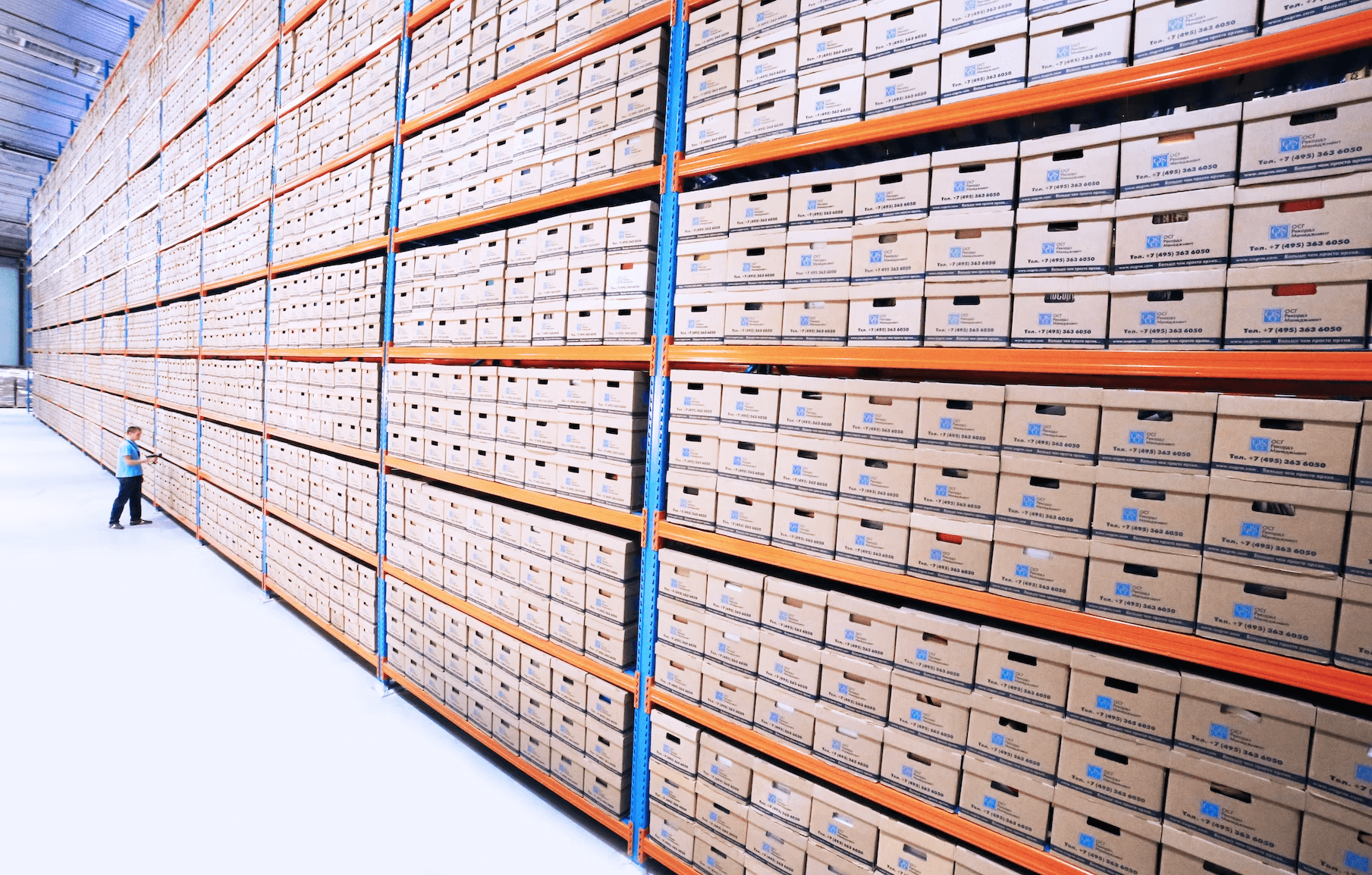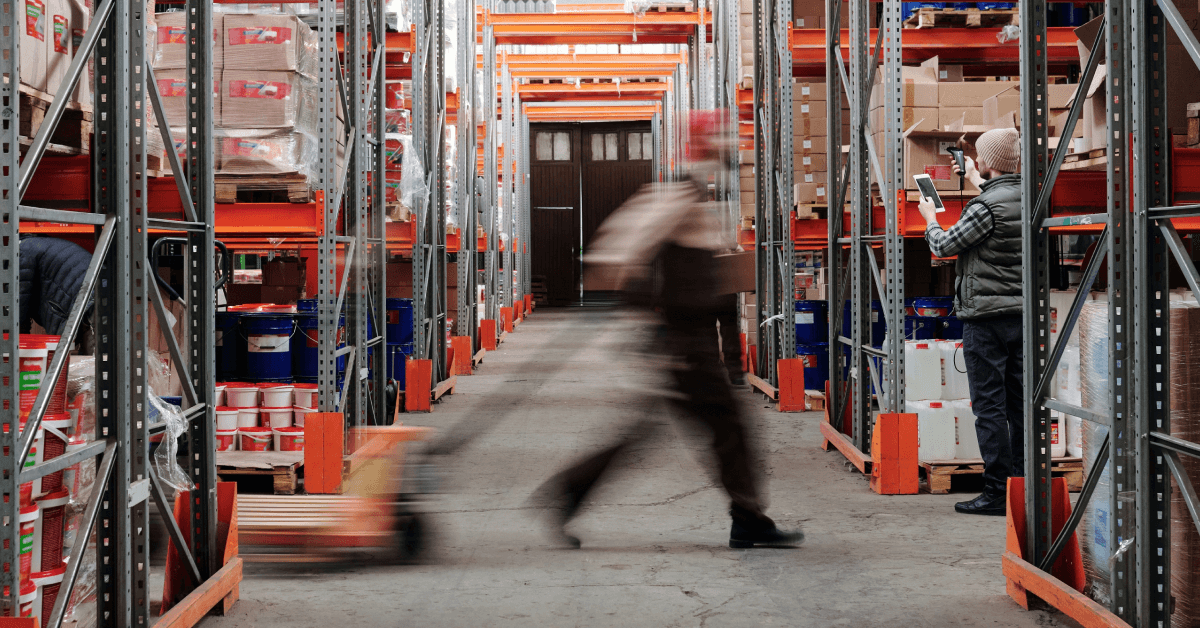8 tactical warehouse optimization strategies for 2025
Eight actionable strategies you can implement to streamline your warehouse operations.

Efficient warehouse operations are the backbone of successful eCommerce businesses. As order volumes increase and SKU counts expand, the systems that worked when you were smaller can quickly become bottlenecks that limit growth and damage customer experience.
Here are eight actionable strategies you can implement to streamline your warehouse operations.
1. Implement mobile scanning and devices
Paper-based systems might work at low volumes, but they quickly become inefficient as operations scale. Mobile scanning solutions eliminate bottlenecks and reduce errors while enabling your team to work directly on the shop floor.
When to implement mobile scanning
- Your daily order volume exceeds several hundred orders
- Your SKU count has grown beyond what staff can reliably memorize
- You need to scale your workforce during peak seasons
- You're experiencing picking errors due to similar-looking products
Key benefits
- Reduced picking errors through barcode verification
- Elimination of bottlenecks from printing paper pick lists
- Faster training for seasonal staff without relying on tribal knowledge
- Real-time inventory updates as operations happen
Action barcode tip
Don't limit scanning to just products. Implement action barcodes at packing stations that trigger specific workflows (like printing labels or selecting box types) to eliminate the need for workers to use keyboards or mice.
2. Set up bin-level inventory management
As warehouses expand, knowing exactly where products are located becomes crucial for efficiency. Bin-level inventory tracking allows precise location management that speeds up both picking and putaway processes.
"Bin-level inventory creates dedicated picking zones that map efficient paths through your warehouse. Without this, staff zigzag back and forth, tripling or quadrupling the time it takes to get orders out the door."
When to implement bin-level inventory
- Your warehouse spans multiple aisles or zones
- Staff are spending excessive time searching for products
- You have multiple units of the same SKU stored in different locations
- You're experiencing inventory discrepancies during cycle counts
Key benefits
- Directed picking paths that minimize travel time across the warehouse
- More efficient putaway processes for received inventory
- Ability to organize warehouse by velocity (fast-moving products in easy-access locations)
- Improved accuracy during cycle counts
- Better training experience for new warehouse staff
Implementation tip
Start simple with zone-level tracking before moving to individual bin locations. This provides immediate benefits while preparing your team for more granular tracking later.
3. Automate order batching
Manual batching is one of the most common time drains in eCommerce warehouses. Many operations have team leads coming in hours early to organize orders for the day—a process that can be completely automated.
"We see warehouse leads coming in hours early to manually sort hundreds of orders into batches before the team arrives. This huge task can be completely automated by having the system organize incoming orders into predefined batches."
Signs you need automated batching
- Someone spends hours daily sorting and organizing orders
- Picking staff wait for batches to be created before starting work
- Similar orders are picked individually rather than together
- Your team struggles to prioritize orders based on shipping deadlines
Key benefits
- Elimination of manual pre-work needed before picking can begin
- Continuous optimization of picking efficiency based on product locations
- Automatic prioritization based on shipping deadlines and SLAs
- More efficient use of warehouse staff time
Implementation approach
- Create batch templates for your most common order types (single-item orders, multi-item orders, specific channels)
- Set batch size limits based on your picking containers (totes, carts)
- Implement prioritization rules for time-sensitive orders (expedited shipping, marketplace orders with strict SLAs)
4. Develop smart packaging logic
The packing station often becomes a bottleneck where decisions about packaging materials slow down processing times. Automating packaging selection streamlines this process while potentially reducing shipping costs.
"The packing station can often be a place where orders pile up and bottleneck your workflow. Creating action barcodes that identify what's in an order to pre-select the packaging has two big impacts: it reduces decision-making requirements and improves shipping rates by optimizing both shipping and packaging costs."
When to optimize packaging logic
- Staff spend significant time deciding which box to use for each order
- You notice shipping costs are higher than necessary due to oversized boxes
- Dimensional weight charges are impacting your shipping expenses
- You want to improve the unboxing experience without slowing fulfillment
Key benefits
- Faster packing through automated box recommendations
- Reduced shipping costs by optimizing package dimensions
- Lower packaging material costs
- Improved customer experience with appropriately sized packaging
- Better decision-making at the packing station through guided workflows
Implementation options
- Create simple product-to-package mapping rules (product X always ships in box Y)
- Implement cartonization that calculates optimal packaging based on product dimensions
- Use action barcodes at packing stations to automate selection
- Set up automation rules based on order contents, channels, or product categories
5. Personalize packaging for marketing opportunities
Your shipping packaging represents a valuable marketing touchpoint that many brands overlook. Strategic packaging personalization can drive repeat purchases and enhance brand loyalty.
"One of the eight-figure snack brands we've seen uses custom messaging inserts through a company called Undigital. This allows them to advertise their other products to customers who have already ordered from their warehouse. It's a great opportunity for operations teams to collaborate with e-commerce and marketing teams to drive additional repeat purchases."
When to implement packaging personalization
- You've mastered basic operational efficiencies
- You're looking for additional marketing touchpoints
- You want to cross-sell related products
- You're seeking to improve unboxing experiences and social sharing
Key benefits
- Additional marketing opportunities without increased shipping costs
- Cross-selling and upselling opportunities based on purchase history
- Enhanced unboxing experience that encourages social sharing
- Increased customer lifetime value through strategic recommendations
Implementation strategies
- Partner with insert specialists like UnDigital for automated in-package personalization
- Use order history to recommend complementary products
- Include personalized thank-you notes for high-value customers
- Design packaging inserts that highlight items that would fit in the same box size for future orders
6. Automate label generation
Manual label creation processes create unnecessary steps and can lead to addressing errors. Automated label generation at the right point in your fulfillment process keeps orders moving smoothly.
Signs you need label automation
- Staff wait for labels to be created or printed
- You're manually selecting shipping methods for each order
- You're not taking advantage of rate shopping across carriers
- Label errors cause shipping delays or misdeliveries
Key benefits
- Elimination of waiting time for label generation
- Automatic rate shopping to select optimal shipping methods
- Reduced shipping costs through carrier optimization
- Integration of specialized regional carriers for better rates
Implementation considerations
- Integrate with multiple carriers to enable rate shopping
- Consider the timing of label generation (at order creation vs. at packing completion)
- Implement label reprinting capabilities for damaged labels
- Use action barcodes to trigger label printing at packing stations
7. Personalize customer experience through communications
Your warehouse operations can become a powerful marketing tool by providing detailed status updates throughout the fulfillment process. Modern consumers appreciate transparency and real-time information about their orders.
When to enhance customer communications
- You've mastered the basic operational efficiencies
- Customers frequently contact support asking where their orders are
- You want to differentiate through superior customer experience
- You're looking for additional marketing touchpoints
Key benefits
- Reduced customer service inquiries about order status
- Improved customer experience through transparency
- Additional marketing touch points throughout the fulfillment process
- Opportunity to build brand loyalty through operational excellence
Communication opportunities
- Order received confirmation
- Picking started notifications
- Packing confirmations with photos of packed orders for high-value items
- Notifications that share when engraving or customization has begun and which team member is crafting your custom piece
- Shipping carrier selection and estimated delivery information
- Delivery confirmation follow-ups
8. Prioritize inventory auditability
Accurate inventory is the foundation of eCommerce operations. Beyond preventing stockouts and overselling, proper inventory auditability is critical for financial reporting and potential investment or acquisition scenarios.
Signs you need better inventory auditability
- You experience frequent stock discrepancies
- Physical inventory counts differ from system numbers
- You lack documentation of inventory adjustments
- Financial reporting for inventory value is difficult or time-consuming
- Investors or lenders have raised concerns about inventory management
Key benefits
- Prevention of overselling and unexpected stockouts
- Clear documentation of all inventory movements
- Easier financial reporting and reconciliation
- Enhanced credibility with potential investors or acquirers
- Faster identification and resolution of inventory issues
Implementation essentials
- Regular cycle counting schedules instead of disruptive full inventory counts
- Clear documentation of all inventory adjustments with reasons
- Real-time integration between warehouse activities and financial systems
- Proper training for all staff on inventory handling procedures
Prioritizing your warehouse optimization
Not all warehouses need to implement every strategy immediately. Here's a suggested implementation order based on impact and complexity:
First steps (immediate impact, lower complexity)
- Mobile scanning implementation
- Basic bin locations
- Automated label generation
Next phase (significant efficiency gain)
- Automated batching
- Packaging logic optimization
Advanced optimization (once basics are solid)
- Packaging personalization
- Enhanced customer communications
- Advanced inventory auditability
Remember that warehouse optimization is an ongoing process rather than a one-time project. Start with the areas causing the most significant bottlenecks in your current operations, measure the results, and continuously refine your approach.
By implementing these eight strategies, you can significantly improve operational efficiency, reduce costs, and enhance the customer experience—all while building a scalable foundation for future growth.




